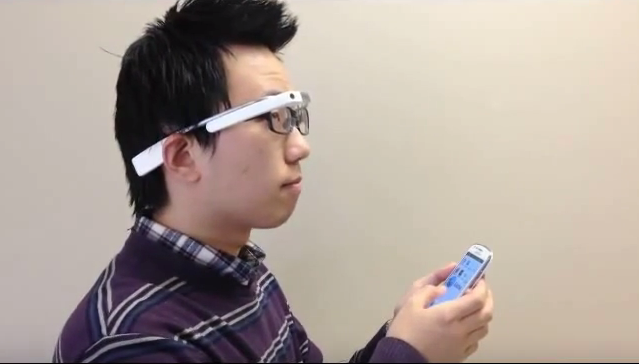New Smart Phone App Will Allow Visually Impaired To Zoom In With Google Glass

Smartphones come with enough problems — poor battery life, shoddy charging cords, lack of memory — that no one needs any more. For the 1.5 million Americans suffering from low vision, though, even looking at a phone can be a problem. The severe visual impairment caused by a variety of conditions can make it difficult for people to use their smartphones, forcing them to use zoom features that result in a loss of context. Researchers from Harvard Medical School’s Schepens Eye Research Institute have developed an app to fix this.
The app projects a magnified version of a smartphone screen to Google Glass, which people can then navigate by turning their heads and focusing on a portion of the screen. Researchers have demonstrated that the technology could benefit many of those with sight issues that make smartphones hard to navigate.
“When people with low visual acuity zoom in on their smartphones, they see only a small portion of the screen, and it’s difficult for them to navigate around — they don’t know whether the current position is in the center of the screen or the corner of the screen,” explained Dr. Gang Luo, a researcher at the eye institute and senior author of the study, in a press release. “This application transfers the image of smartphone screens to Google Glass and allows users to control the portion of the screen they see by moving their heads to scan, which gives them a very good sense of orientation.”
Magnification is considered one of the most effective ways to combat vision loss, which often leaves people with difficulties discerning fine details and reading. The new head-motion technology proved valuable: When the researchers had one group of volunteers use conventional smartphone zoom and the other use the new app, the latter group posted a 28 percent faster time when completing a trial.
The researchers are already planning their next steps for the app: syncing additional Google Glass gestures to smartphones. They would also like to compare the head-motion navigation to more commonly used accessibility features found on phones, like voice-based navigation.
“It is conceivable to think of a smart glass working independently without requiring a paired mobile device in near future,” said study first author Dr. Shrinivas Pundlik. “The concept of head-controlled screen navigation can be useful in glasses even for people who are not visually impaired.”
Check out the video to see the new app in action.



























